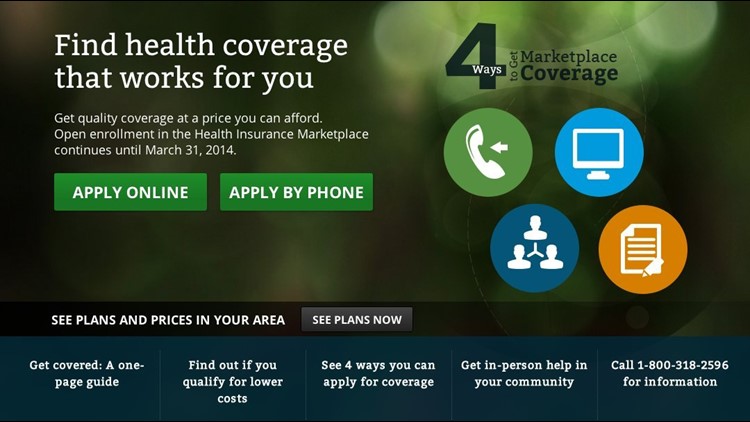WASHINGTON (CNN) — By declaring the Obamacare website now works as originally planned, with most users able to navigate it smoothly, the administration effectively painted a big target on it.
Detractors led by conservative Republicans now will look for any anecdotal evidence of continued problems with HealthCare.gov in their efforts to depict President Barack Obama’s signature domestic accomplishment as the ultimate example of government overreach and mismanagement.
The Republican National Committee wasted no time Monday, distributing a list of media reports that noted administration officials warned people to expect continued glitches with the problem-plagued website.
Its headline blared that the administration “claims An Obamacare victory, but the results prove otherwise.”
Administration: We met the website deadline
On Sunday, officials announced they had met their self-imposed November 30 deadline for getting HealthCare.gov working for the “vast majority” of users, saying response times and error rates had been slashed while capacity increased.
Jeffrey Zients, a former administration official brought in to oversee the website fixes after its botched launch on October 1, compared the hardware upgrades so far to widening a highway on-ramp from two lanes to four.
That means chronic breakdowns, error messages and delays users experienced two months ago when the website went live have mostly disappeared, he said, noting the average response time was less than 1 second and the system’s “uptime” — a measure of system stability — was consistently surpassing 90%.
It all means that HealthCare.gov can now handle its original intended volume of 50,000 concurrent users for a total of 800,000 visitors a day, according to Zients.
The expected surge saw 375,000 visitors by 12 noon ET on Monday, White House spokesman Jay Carney said.
In a commentary in USA Today, Health Secretary Kathleen Sebelius advised consumers to try the website in off-peak hours — mornings and evenings on weekdays or else on weekends — and noted a new feature for times of high demand “that allows users to opt to receive an e-mail when it’s a better time to come back.”
She emphasized that they have time to sign up, with a December 23 deadline to get coverage that starts on January 1 and a March 31 enrollment deadline to avoid a financial penalty for not having insurance in 2014.
Back-end problems remain
At the same time, both Zients and Sebelius warned that further glitches would occur, providing fodder for political foes to attack both the website and the overall 2010 Affordable Care Act that passed with no Republican votes.
Meanwhile, insurers warn that more work is needed on the “back-end” functions of the website that process payments and provide enrollment information to the companies.
“Insurers are still getting enrollment files that are duplicative and have missing or inaccurate information,” Robert Zirkelbach, spokesman for health insurance industry trade association group America’s Health Insurance Plans, said in a statement to CNN. “In some cases they are not getting the enrollments at all.”
The administration chose to accentuate the positive, with a statement Monday saying November enrollment figures on HealthCare.gov were expected to be higher than the previous month’s numbers.
Final November numbers, still being prepared for a mid-December release, will show more Americans enrolled while a massive effort took place to repair the website, according to Joanne Peters, a Health and Human Services spokeswoman.
“We expect that enrollment will increase with the technical improvements we’ve made,” Peters said, adding enrollment through alternate channels and successful state-based exchanges would help bolster November’s figures.
In October, the first month of a six-month enrollment period, just over 106,000 people signed up for Obamacare. Less than 27,000 of them did so through the HealthCare.gov website, which was supposed to be the main enrollment portal.
Initial enrollment figures lower than hoped
An unofficial count by CNN, based on available figures from the government and 14 state-run exchanges, now puts the enrollment figure at more than 200,000.
Marilyn Tavenner, the official charged with implementing Obamacare as director of the Centers for Medicare and Medicaid Services, told a congressional hearing last month that the administration initially hoped to enroll 800,000 people by the end of November. The overall enrollment target by March 31 is 7 million.
A properly functioning HealthCare.gov is crucial to implementing the most vital provisions of the health law that require people to have health coverage.
In theory, the law would create large pools of younger, healthier participants whose premiums would help offset the cost of providing care for older policy holders who use the health care system more.
The program must convince younger people who might be less inclined to pay for coverage they don’t think they need.
To GOP opponents, the law needs to go. They focused on canceled coverage for some individual policy holders as an example of how Obama and Democrats failed to fulfill a pledge that people could keep health insurance they liked.
“This isn’t just about a broken website, it’s about a fundamentally-flawed law,” said Michael Steel, spokesman for House Speaker John Boehner, while an aide to House Majority Leader Eric Cantor advised against declaring the website problems a thing of the past.
“Based on past performance, it would be prudent to wait before determining that the website truly is fixed,” said Doug Heye, the deputy chief of staff to the Virginia Republican.
CNNMoney: Premiums influenced by state roles
Another Republican attack line — that people are paying more for their health care under Obamacare, despite Obama’s claim that costs would go down — may depend on where they live, according to a CNNMoney report.
In Oregon and Maryland, state regulators challenged the premiums that insurers wanted to charge for Obamacare policies, forcing the companies to lower their rates, said the report by CNN’s Tami Luhby.
But in states like Florida and Texas, regulators took a hands-off approach, allowing premiums that insurers filed to sail through.
Like most things Obamacare, the treatment was infused with politics, with several states run by Democrats more active and public about negotiating with insurers while some GOP-led states disassociated themselves from the process.
Rate reviews by states have proved effective in lowering premiums, according to a study last year by the Kaiser Family Foundation. The average rate allowed after a review was 2.6 percentage points lower than the average rate initially requested in the individual market, though there was a wide variation between states.
“If states were more aggressive in reviewing rates, you saw more of a decrease,” said Cynthia Cox, policy analyst at Kaiser.
CNN’s Martina Stewart, Kevin Liptak, Z. Byron Wolf, Ashley Killough, Lisa Desjardins and Jim Acosta contributed to this report.



